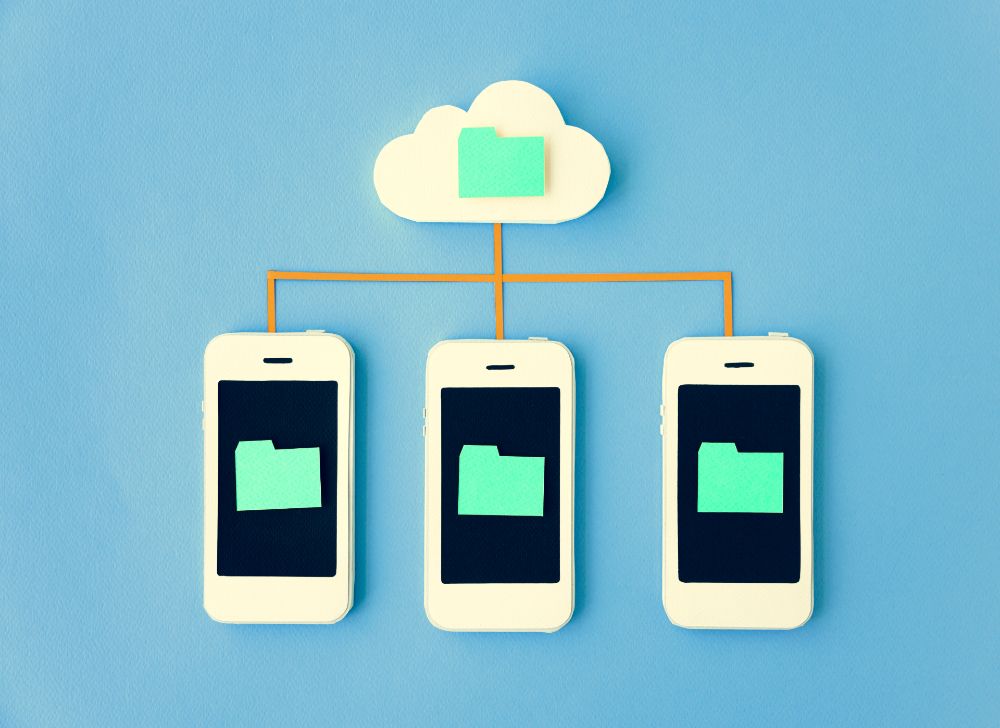Legacy application modernization is the process of updating old, mission-critical software so it performs like modern applications without disrupting the business that depends on it. When you run a company that’s been on the market for a while, aging systems are both a backbone and a bottleneck: they keep essential operations running, but they also slow innovation and increase maintenance costs.
We’ve written this article to give IT leaders and decision-makers a clear, practical roadmap for deciding when to turn to legacy app modernization, which approaches make sense, and how to measure the return on that investment. You’ll learn how to spot the business and technical triggers that make modernization urgent, weigh your options, and build a digital transformation strategy that aligns with measurable outcomes. We’ll also break down the common pitfalls and show how a thoughtful modernization plan turns those risks into long-term value: faster time to market, lower operating costs, and a platform that supports future growth.
Understanding Legacy Applications
A legacy application refers to any outdated software that continues to support critical business functions but is no longer optimal in the modern technology environment. These applications may still perform their intended tasks but often rely on outdated programming languages, unsupported platforms, or hardware that is difficult to maintain.
For many organizations, legacy systems are a paradox: they are both indispensable and problematic. While they hold years of valuable data and processes, they also slow down digital transformation efforts. What once was a competitive advantage may now hinder growth and scalability.
Common Characteristics of Legacy Software
Outdated systems typically show their age in multiple ways. Legacy software may lack compatibility with modern operating systems, be prone to security vulnerabilities, or require specialized skills that are scarce in today’s workforce. Moreover, these systems may be rigid, which makes it difficult to adapt to changing customer expectations or regulatory requirements.
Another giveaway of legacy applications is high maintenance costs. Organizations often spend a significant portion of their IT budgets just to keep these systems running, leaving little room for innovation. Over time, the total cost of ownership becomes unsustainable. The two ways to fix this are building a new app from scratch or modernizing the existing software. Let’s take a look at the situations when legacy software modernization is the way to go.
When and Why Modernize Legacy Apps
Biggest Challenges that Legacy Modernization Resolves
With the course of time, legacy applications become a burden rather than an asset. The world of technology is constantly changing and evolving, and it’s essential to keep up with the recent standards, especially in the world of tech and SaaS. Some of the biggest challenges outdated software poses are:
- Lack of compatibility with newer platforms, which makes integrations with modern tools or third-party services nearly impossible without expensive custom workarounds. This rigidity often prevents companies from responding quickly to market changes or customer needs.
- Limited employee productivity, with clunky interfaces and manual processes slowing down workflows, which in its turn increases costs. From a strategic standpoint, businesses tied to legacy applications risk losing their competitive edge to more agile competitors who have already embraced modernization.
- Lack of access to modern technology means lack of access to useful features. The technology landscape has evolved dramatically over the past decade. Without modernization, organizations can’t fully leverage tools like real-time analytics, automation, or AI-driven insights.
- Security threats that go hand in hand with outdated systems, leaving businesses vulnerable to cyberattacks and compliance violations. A survey by Saritasa reports security vulnerabilities to be the biggest challenge for outdated systems in 2025. Legacy modernization ensures that companies stay aligned with both current and future technology standards.
- Increase in maintenance costs. At first glance, maintaining legacy software may seem cheaper than modernization, but things are different in the long run. Supporting outdated software often requires specialized (and expensive) talent, while frequent downtime and performance issues drive hidden costs in lost productivity and customer dissatisfaction.
How to Modernize: Best Options
Modernizing legacy applications isn’t and can’t be a one-size-fits-all journey. The right path depends on your business objectives, existing system architecture, and the resources you’re willing to invest. Companies around the world are increasingly seeking tailored legacy application modernization services that both resolve immediate challenges and future-proof their IT environments. Let’s explore some of the most effective modernization options available today.
Legacy Application Modernization Services
Specialized software modernization services is an easy and fool-proof way to get a structured approach to transform outdated applications into more agile and secure systems. Working with a dedicated software modernization company often begins with a detailed system assessment, where consultants analyze dependencies, performance bottlenecks, and business-critical workflows. From there, teams can determine whether rehosting, replatforming, or refactoring is the most appropriate strategy.
Trusted providers of legacy app modernization services like Smart IT bring both technical expertise and industry-specific knowledge, helping clients balance business continuity with technological advancement. If you’re interested in modernizing your application or software system, contact us to see if we’re a good fit for you.
Microservices Architecture
One of the most transformative approaches in modernization is moving from monolithic applications to microservices architecture. Unlike traditional systems where all functions are tightly coupled, microservices break applications into smaller, independent components that communicate via APIs.
The biggest advantage of this design is its immense flexibility: this way, you can scale services individually, roll out updates without affecting the entire system, and integrate new features faster than if you were running a monolithic app. Microservices also align perfectly with cloud-native platforms, making them a cornerstone of many digital transformation strategies. For enterprises seeking agility and faster time-to-market, adopting microservices can be the optimal approach in modernizing their system.
Steps on How to Modernize Legacy Applications
While some organizations attempt to handle the process in-house, it’s easier to find success partnering with an experienced outsourcing provider like Smart IT, where teams bring a combination of domain knowledge and hands-on experience. This way, you can be sure that the team addresses technical shortcomings and also ensures your modernized systems align with long-term business goals. Here’s how the process typically goes.
Step 1: Assessment of Existing Systems
Regardless of the specifics, every legacy modernization process begins with an audit of current applications. Outsourcing teams dive deep into the technical architecture, code base, integrations, and dependencies to identify pain points and risks. They also evaluate system performance and security situation.
This step is critical because many legacy systems have undocumented features or hidden workflows that are easy to overlook. With an external partner, companies benefit from an objective, fresh perspective that highlights inefficiencies internal teams may have overlooked or normalized over time.
Step 2: Define Objectives for Modernization
With the technical foundation mapped out, the next step is to define clear business and IT objectives. These may vary, but some of the most common ones are:
- Reducing maintenance costs
- Enabling cloud migration
- Improving user experience
- Enhancing compliance with regulatory requirements.
Outsourcing partners play a key role in bridging the gap between business stakeholders and technical teams. By aligning goals across departments, they ensure the modernization effort delivers tangible result, regardless of the goal in sight.
Step 3: Develop a Digital Transformation Strategy
A successful software modernization initiative requires a comprehensive digital transformation strategy. Outsourcing teams work together with the client to design a roadmap that prioritizes initiatives based on business impact and resource availability. Outsourcing companies also bring knowledge of industry’s best practices in order to help organizations avoid common pitfalls and speed up modernization.
Step 4: Choose a Modernization Approach
The final step is selecting the right approach. Be it rehosting, replatforming, refactoring, or replacing the system entirely, outsourcing teams provide detailed cost-benefit analyses, highlight potential risks, and recommend the approach most aligned with the client’s objectives. A good outsourcing or custom software development company works closely with decision-makers to strike the right balance between minimizing disruption and maximizing ROI.
And through this structured approach, working with an outsourcing company is an easy journey to turn legacy application modernization from a daunting challenge into a manageable, ROI-driven initiative.
How to Measure ROI from Modernization
One of the most pressing questions business leaders ask when considering legacy application modernization is, “What’s the return on investment?” Modernization involves both direct costs and organizational change, so stakeholders need clear metrics to evaluate whether the effort delivers measurable value. Here’s what you should look for to justify modernization initiatives and build confidence among executives, employees, and customers alike.
Metrics to Pay Attention to
To get your ROI measurements correctly, you need to start by selecting the right metrics. These indicators should capture both technical improvements and business outcomes. The most commonly tracked key metrics include:
- Response times: how quickly systems process requests.
- Error rates: the frequency of failures or system issues.
- Total cost of ownership (TCO): the full expense of maintaining the system.
- Maintenance costs: how much is spent on updates, patches, and specialized staff.
- Time-to-market for new features: how quickly innovations are delivered.
- Customer retention rates: loyalty among existing customers and repeat purchases.
- Employee satisfaction: internal adoption and ease of use.
Measuring Cost Savings
Cost reduction is probably the benefit of modernization you think of in the first place. Legacy systems often demand high maintenance spending, so by modernizing outdated systems, businesses can significantly cut these expenses. ROI here is often measured by comparing pre-modernization operational costs against the reduced expenditures after implementation. Over time, predictable cloud pricing models and reduced dependency on niche expertise make budgeting more stable and transparent.
Improving User Experience
ROI spans beyond just monetary gains – it’s important to remember that customer-facing benefits also matter. Modernized applications deliver faster, more intuitive experiences, directly influencing customer satisfaction and loyalty. Metrics such as Net Promoter Score (NPS), customer churn rates, and support ticket volumes provide tangible ways to measure user experience improvements. A smoother digital experience often translates into stronger brand reputation and, ultimately, increased revenue.
Long-term Strategic Value
This is perhaps the most overlooked aspect of ROI. By adopting modern technologies such as microservices architecture or enterprise application integration, your business gains a solid foundation for innovation and further scaling. While harder to quantify in the short term, modernization generates sustainable competitive advantage. The ROI here is measured in opportunities you gain like growth potential, improved agility, and reduced risk exposure.
Conclusion
If your business has been on the market for a while, legacy application modernization is not a question of if but when. Companies that continue to rely on outdated systems risk falling behind competitors, by overspending on maintenance and exposing themselves to unnecessary security threats.
If your organization is weighing whether now is the right time to modernize, the next step is finding a partner that understands both the technical and business dimensions of the challenge. At Smart IT, we’ve helped companies of all sizes modernize legacy systems into platforms that drive innovation, reduce costs, and create long-term value. Contact us today to discuss your modernization goals and see if we’re the right fit for your business challenges.
17 September 2025





